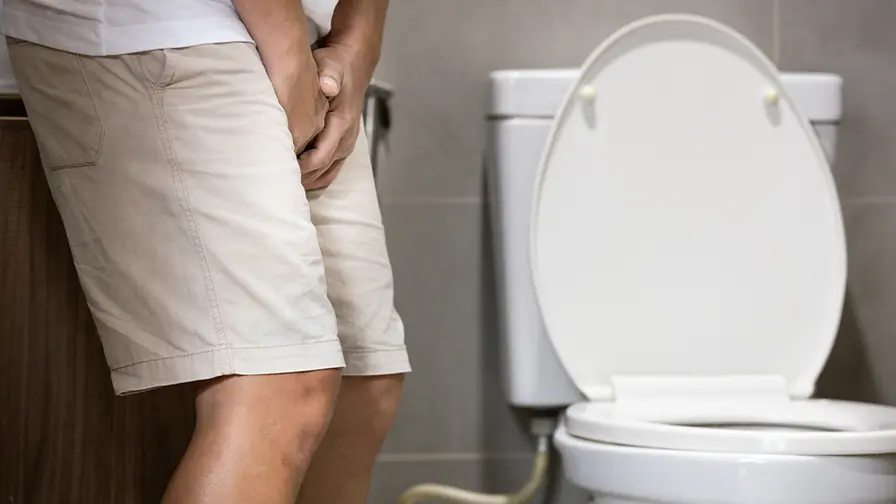"Hyperglycemic disorder" is stuck in the inflammatory stage, and diabetic foot ulcers are prone to amputation! Medical: Balance the microenvironment to help rapid healing

Farming barefoot causes black and swollen big toe. Doctor: Diabetic foot ulcers have high amputation rate
Diabetes is prevalent in Taiwan. A 50-year-old man in Nantou had a history of diabetes for many years. He had been working barefoot for many years and had his feet soaked in water. He neglected to treat his diabetic foot and applied medicine on his own at home, which caused the big toe wound to worsen until it became swollen and blackened. I went to Nantou Zhushan Show Chwan Hospital for debridement and referral to surgery. After the infection was controlled, I applied a new type of diabetic foot ulcer cream as soon as possible. The ulcer healed smoothly with only one return visit a week.
Dr. Su Qicheng, director of the General Surgery Department of Zhushan Show Chwan Hospital, reminded that diabetic foot ulcers are difficult to heal, and many patients in the market use Chinese herbal medicine for external application. Once treatment is delayed, it may cause wound ulceration and increase the risk of subsequent amputation. In particular, diabetic foot ulcers, which are difficult to heal and have a high amputation rate, require multi-specialty intervention. At present, Zhushan Shuchuan Hospital integrates the cardiovascular center and wound difficulty center to treat vascular obstruction and wound infection at the same time, increase the rate of limb salvage, and allow patients with diabetic foot ulcers to receive complete care.
“Hyperglycemic disorder” The wound is stuck in the inflammatory stage and it is difficult for diabetic foot ulcers to heal
Diabetic people have a significantly increased risk of foot wound ulcers due to continued elevated blood sugar. About 15% of diabetics will develop foot ulcer complications. Once a diabetic foot ulcer occurs, the lifetime risk of amputation is as high as 14-24%. The prevalence of diabetic foot is increasing year by year, and diabetic foot ulcer is one of the most common chronic wounds in clinical practice.
Dr. Su Qicheng said that in general, normal wound healing must go through the hemostatic period, the inflammatory period, the proliferative period, and finally reach the remodeling period. However, in patients with diabetic foot ulcers, in addition to poor blood circulation, neuropathy and other factors, another major difficulty in wound healing is It is “high blood sugar” that causes wound cells to be completely in an inflammatory state, affecting the balance of macrophages and preventing wounds from healing.
“If the wound is stuck in the inflammatory stage and cannot move to the proliferative stage, the wound will never heal!” Dr. Su Qicheng pointed out that the human body’s macrophages are divided into M1 type and M2 type. In patients with diabetic foot ulcers, the wound continues to be in the inflammatory stage, leading to the accumulation of M1 macrophages, continuing to produce inflammation, and inhibiting the M2 macrophages responsible for anti-inflammation, promoting extracellular matrix deposition and angiogenesis. The imbalance of macrophages greatly increases the difficulty of wound healing in diabetic foot ulcers. Without effective treatment and proper care, the risk of subsequent infection or even amputation may continue.
New dawn for diabetic foot ulcers helps difficult wounds heal quickly
“It is not recommended for diabetic foot patients to use Chinese herbal medicine indiscriminately, but the therapeutic potential of ‘Plectranthus odorifera’ has become a breakthrough new drug through scientific methods, and has seen a lot of clinical evidence in surgical treatment!”
Dr. Su Qicheng explained that Plectranthus odorifera has a long history of trauma application. In recent years, Taiwanese pharmaceutical companies have extracted the active ingredients of Plectranthus odorifera and developed it into a Western-style cream specifically for the treatment of diabetic foot ulcers. It has also been approved for diabetic foot ulcer indications, and its safety and effectiveness have been officially recognized.
Dr. Su Qicheng pointed out that in the past, wounds that were difficult to heal quickly with traditional treatments have been clinically seen to have many successful cases of complete healing within a few weeks after the intervention of the new diabetic foot cream. It is a great boon for wound treatment for patients with diabetic foot ulcers who face vascular disease, neuropathy and hyperglycemia.
Two new mechanisms to balance the wound microenvironment, the complete cure rate exceeds 60%
“Macrophages that balance the microenvironment are a new mechanism for difficult wound treatment, which is different from the mechanism of previous therapeutic weapons!”
Dr. Su Qicheng explained that the two innovative mechanisms of the new cream are: one is to inhibit vinegar inflammation of M1 cells, and the other is to promote the polarization of M2 cells to accelerate tissue repair and transform diabetic foot ulcers into normal wounds. An international phase III clinical trial found that after 16 weeks of treatment for diabetic foot ulcers, the new cream can achieve a complete cure rate of more than 60% compared with commonly used silver ion dressings, while the complete healing rate of traditional silver ion dressings is About 35 percent, showing significant benefits in helping difficult wounds heal.
Dr. Su Qicheng pointed out that in the past, when faced with difficult wounds such as exposed tendons or foot ulcers with multiple chronic diseases, even if modern dressings and growth factors were used simultaneously, it was difficult to significantly improve the treatment time. Nowadays, through the use of new creams, many serious wounds have been clinically seen to help heal quickly within 3-4 weeks. Its evidence has been approved by the U.S. FDA for rapid review and has been sold to China, Singapore, and Malaysia. In the future, there will be opportunities to use the new ointment invented in Taiwan to help patients with diabetic foot ulcers around the world.
Dressings, ointments, and growth factors all have their roles. Difficult wounds must be treated as soon as possible.
“The treatment of difficult wounds often requires clinical judgment to choose the appropriate weapon to help the wound heal quickly!” Dr. Su Qicheng emphasized that modern dressings, growth factors and new creams each have their own roles, depending on the wound status of different patients, and whether There are risk factors such as systemic diseases, and appropriate treatment options need to be judged by physicians.
Dr. Su Qicheng reminded that if you have wounds that are difficult to heal or have chronic diseases, you must pay attention to the wound condition and seek medical treatment as soon as possible, and avoid using herbal medicines or related products of unknown origin to avoid the risk of foot ulcers and amputation.
Source: World J Clin Cases. 2023 Mar 16; 11(8): 1684–1693.





